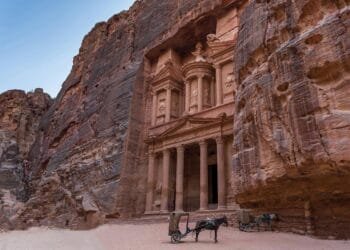The Colosseum is an oval amphitheater located in Rome, Italy, just east of the Roman Forum. It is the largest ancient amphitheater ever constructed and, despite its age, the largest standing amphitheater in the world today.
Construction began in 72, during the reign of Emperor Vespasian (r. 69-79 CE). Titus, Vespasian’s son, opened the Colosseum with 100 days of games, including wild animal fights and gladiatorial combats in 80 CE.
Further modifications were made during the reign of Titus’ brother and successor, Domitian (r. 81–96). The three emperors that were patrons of the work are known as the Flavian dynasty, and the amphitheater was named the Flavian Amphitheatre by later classicists and archaeologists because of its association with their family name.
The main purpose of Rome’s Colosseum was to entertain the people with gladiator battles, and sometimes included wild animals such as elephants and tigers. Animal fights were frequently held in the mornings by the ‘bestiarii.’ Convicted criminals were frequently thrown to wild animals during intermissions.
Gladiator battles were held in the afternoons. The barbaric games were finally prohibited by Emperor Honorius in 404 CE. The public lynching of a monk who attempted to stop a gladiator fight was the final straw, and only wild animal shows were held there until the year 523.
After four centuries of active use, the Colosseum fell into neglect, and it was used as a source of building materials until the 18th century. Though two-thirds of the original Colosseum has been destroyed over time, the amphitheater remains a popular tourist destination as well as an iconic symbol of Rome.











Comments 1